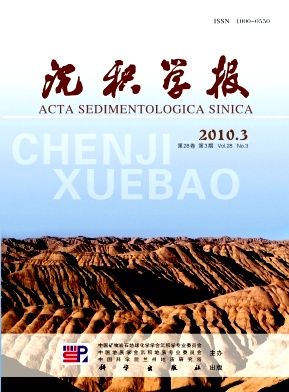Tsunamis and Tsunami Deposits
- Received Date: 1900-01-01
- Rev Recd Date: 1900-01-01
- Publish Date: 2010-06-10
-
Key words:
- tsunamis
Abstract: Tsunamis are catastrophic events in a process of evolution of the Earth. Tsunami deposits is benefit for correctly recognizing tsunami behavior and reducing hazard and also is an important subject in the geosciences for understanding the whole truth of natural phenomena and history of the Earth. A tsunami is a water wave train triggered by submarine earthquake, landslide, bolide impact and volcanism with long wavelengths and long periods which differentiate from other waves. The physics of tsunamis generally link four distinct processes: generation, propagation, inundation of onshore areas and backwash. In general, tsunamis seem unlikely that most earthquakegenerated tsunamis can induce a deep water sedimentary imprint, but impactgenerated tsunamis may do so close to source when tsunamis propagate from source to coast. Tsunamis erode coast and transport sediments to onshore, shallow water bay and lagoon and are deposited during runup. Backwash flows follow the maximum landward inundation of individual tsunami waves and are traction flows to seaward. Backwash generally induced not only debris flows and turbidity currents, but also suspended clouds of mud resulting in hemipelagic setting. Because tsunami behavior depends strongly on bathymetric and topographic configurations, tsunami deposits show differences in diverse environment. Detailed sedimentary study had been carried out about onshore finegrain tsunami deposits and storm deposits to differentiate both. Our composited view is that the deposits characterized by (1) fining and thining upward sequences; (2) repeated bidirectional currents; (3) ripup clasts; (4) less well sorted grains; (5) large inland extent;although each of these five points of evidence could be attributed to storm or other depositional processes individually, no sedimentary process except tsunami can account for all of them simultaneously . The emplacement of onshore boulders is usually attributed to highenergy events tsunamis or storms, but the interpretation remains unsolved. However, the boulders ridge complexes may be the result of storms. Siliciclastic tsunamiites in shallow water generally show intercalation of exceptionally highenergy regimen into underlying and overlying lowenergy finegrain background deposits and can be divided into 4 different TnaTnd units. And earthquakegenerated tsunamiites have special characteristics that show seismitestsunamiites sequences while carbonate tsunamiites show scourfill structure related to incoming and backwash flows. The sedimentary process of deep sea tusnamiiites remains unclear. Propagation of tsunami can induce deep sea Mediterranean A type homogenite, but deep sea tsunamiites may mainly be related to backwash, for example the current hot topic KT impactrelated tsunamiites. Although current research promotes the understanding of tsunamis, many open questions remain such as the sedimentary process of tsunamis and identification of tsunami deposits. We believe that further development of tsunamis sedimentology will supply sufficient foundation for it.
| Citation: | WANG Licheng. Tsunamis and Tsunami Deposits[J]. Acta Sedimentologica Sinica, 2010, 28(3): 596-610. |






 DownLoad:
DownLoad: